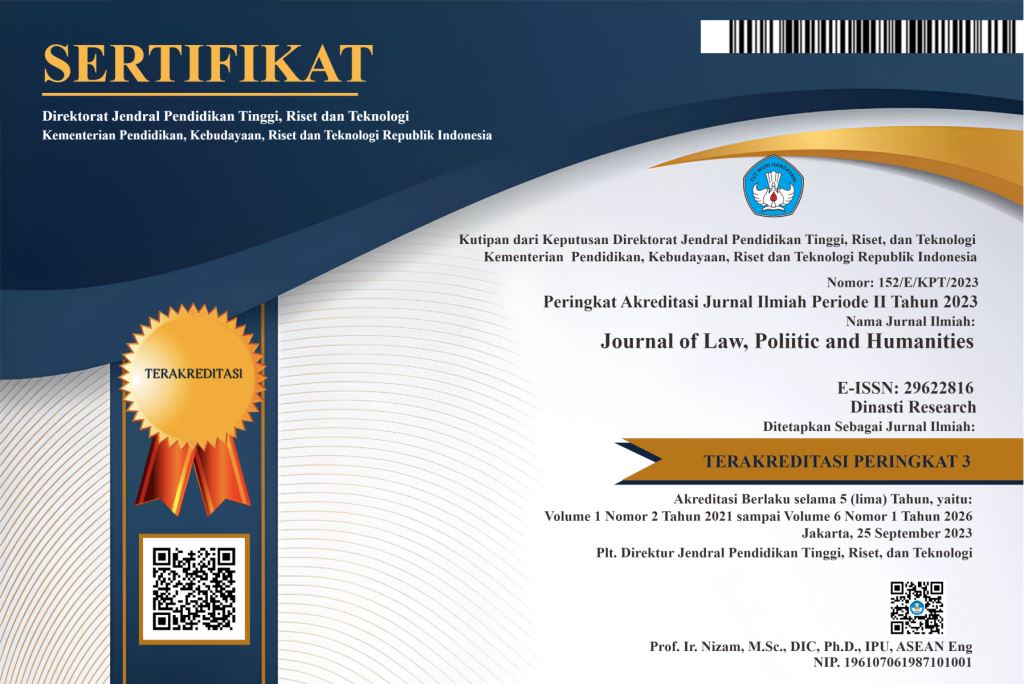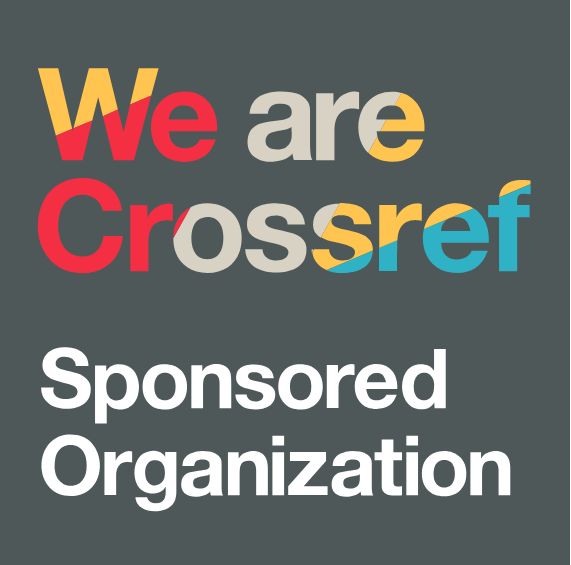Military Leadership in Business: An Analysis of its Role and Impact in Indonesia
DOI:
https://doi.org/10.38035/jlph.v5i4.1394Keywords:
Military Leadership, Indonesian Business, Organizational Performance, Transformational Leadership, Case StudyAbstract
This study examines the role and impact of military leadership in the business sector in Indonesia, an important topic amidst the growing number of former military personnel occupying leadership positions in companies. The primary objective of this research is to analyze how military leadership styles are applied in business contexts and their impact on organizational performance. The research questions include: What is the role of military leadership in the business sector? What is its impact on business organizational performance? This research uses a qualitative approach with a case study design and in-depth interviews as data collection techniques. The data were analyzed using thematic analysis to identify key patterns and themes. The findings indicate that military leadership significantly contributes to organizational discipline and efficiency but faces challenges in flexibility and innovation. The conclusion of this research highlights the importance of adapting military leadership to the dynamic business environment and provides suggestions for further in-depth research.
References
Azwar, A., & Suryana, M. J. (2021). Dwifungsi TNI dari Masa ke Masa. Jurnal Academia Praja, 4(1), 154–179. https://doi.org/10.36859/jap.v4i1.182
Baldassarre, B., Bocken, N., Calabretta, G., Diehl, J., & Keskin, D. (2019). Track 4.f introduction: strategic design of sustainable business models. Conference Proceedings of the Academy for Design Innovation Management, 2(1). https://doi.org/10.33114/adim.2019.4f
Bass, B. M. (1985). Leadership and Performance Beyond Expectations. Free Press.
Duchek, S. (2019). Organizational resilience: a capability-based conceptualization. Bur - Business Research, 13(1), 215-246. https://doi.org/10.1007/s40685-019-0085-7
Geissdoerfer, M., Bocken, N., & Hultink, E. (2016). Design thinking to enhance the sustainable business modelling process – a workshop based on a value mapping process. Journal of Cleaner Production, 135, 1218-1232. https://doi.org/10.1016/j.jclepro.2016.07.020
Hersey, P., & Blanchard, K. H. (1969). Life Cycle Theory of Leadership. Training and Development Journal, 23(5), 26–34.
Irfan, M., MP, A. D., Armyanto, N. G., Rifqi, R. M., Azka, S. N., & Ghofur, M. A. (2021). Pengaruh Disruptive Innovation Terhadap Pendidikan Di Akademi Militer Pada Era Society 5.0. Prosiding Seminar Nasional Sains Teknologi Dan Inovasi Indonesia (SENASTINDO), 3(November), 279–290. https://doi.org/10.54706/senastindo.v3.2021.157
Mellor, A., Jackson, S., & Hardern, R. (2012). Can adventurous training have a role in improving clinical outcomes?. Journal of the Royal Army Medical Corps, 158(2), 110-114. https://doi.org/10.1136/jramc-158-02-08
Mukhtadi, M., & Poespitohadi, W. (2019). Peran Seskoad Dalam Mendidik Calon Pemimpin TNI di Era Globalisasi. SKM.
Muktamar, A., & Yassir, B. M. (2024). Hubungan Gaya Kepemimpinan Dan Manajemen Sumber Daya Manusia. Journal of International Multidisciplinary Research.
Prabowo Subianto. (2021). Kepemimpinan Militer. 535–536.
Prasetiadi, D. Z., Marjono, M., & Sumardi, S. (2021). Keterlibatan Militer dalam Politik Pemerintahan di Indonesia Tahun 1958-1998. HISTORIA: Jurnal Program Studi Pendidikan Sejarah, 9(1), 23. https://doi.org/10.24127/hj.v9i1.3000
Purao, S. and Rossi, C. (2011). Action design research. Mis Quarterly, 35(1), 37. https://doi.org/10.2307/23043488
Rachmat, A. N. (2022). Peluang Dan Tantangan Kepemimpinan Indonesia Dalam Bidang Politik-Keamanan Di Asean Pada Krisis Politik Myanmar Tahun 2021. Jurnal Dinamika Global, 7(02), 178–198. https://doi.org/10.36859/jdg.v7i02.1108
Sahetapy, M. T. (2019). Pertahanan Indonesia dan Pandangan Mengenai Ancaman serta Ambisi pada Setiap Era Kepemimpinan Indonesia. Fundamental Management Journal, 4(1), 37–51.
Soekarnoputri, M. (2021). Kepemimpinan Presiden Megawati Pada Era Krisis Multidimensi, 2001-2004. Jurnal Pertahanan & Bela Negara, 11(1), 49–66. https://doi.org/10.33172/jpbh.v11i1.1211
St?nciulescu, R. and Beldiman, E. (2019). The issue of leadership styles in the military organization. Land Forces Academy Review, 24(1), 54-60. https://doi.org/10.2478/raft-2019-0006
Sumardi, S. (2021). Keterlibatan Militer dalam Politik Pemerintahan di Indonesia Tahun 1958-1998. HISTORIA: Jurnal Program Studi.
Sutisna, S. (2022). Kepemimpinan Strategis Menghadapi Ancaman Nir-Militer; di Tengah Pandemi COVID-19 dalam Pertahanan Nir-Militer. Multidisiplin Indonesia.
Sugiarto, N. K. (2018). Bisnis Militer Pasca Orde Baru. Cosmogov: Jurnal Ilmu Pemerintahan.
Sugiarto, N. K. (2019). Bisnis Militer Pasca Orde Baru. Core.Ac.Uk, 4(2), 237–246. https://doi.org/10.24198/cosmogov.v2i2.xxxxx
Wardani, P., Sutisna, S., & Supriyatno, M. (2022). Kepemimpinan Strategis Menghadapi Ancaman Nir-Militer; Di Tengah Pandemi Covid-19 Dalam Pertahanan Nir-Militer. Citizen?: Jurnal Ilmiah Multidisiplin Indonesia, 2(1), 138–145. https://doi.org/10.53866/jimi.v2i1.45
Yukl, G. (2013). Leadership in Organizations. Pearson.
Downloads
Published
How to Cite
Issue
Section
License
Copyright (c) 2025 Gerry Juan Carlos, Tri Widyastuti, Adler Haymans Manurung, Hasanuddin Hasanuddin

This work is licensed under a Creative Commons Attribution 4.0 International License.
Authors who publish their manuscripts in this journal agree to the following conditions:
- The copyright on each article belongs to the author(s).
- The author acknowledges that the Journal of Law, Poliitic and Humanities (JLPH) has the right to be the first to publish with a Creative Commons Attribution 4.0 International license (Attribution 4.0 International (CC BY 4.0).
- Authors can submit articles separately, arrange for the non-exclusive distribution of manuscripts that have been published in this journal into other versions (e.g., sent to the author's institutional repository, publication into books, etc.), by acknowledging that the manuscript has been published for the first time in the Journal of Law, Poliitic and Humanities (JLPH).


























